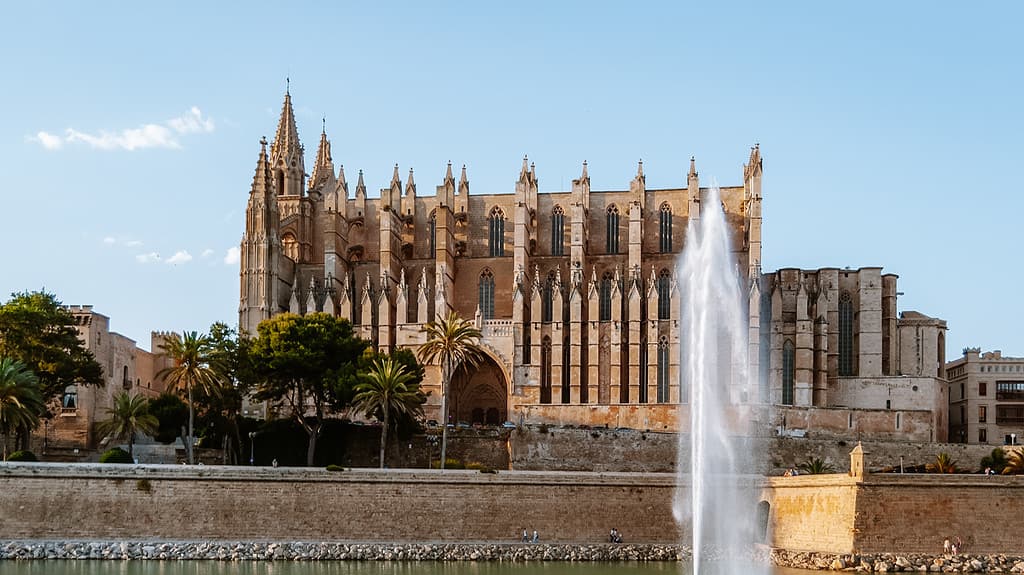Roads running along the rocky coastline, mountain passes through wild countryside and picturesque villages scattered across the country encourage you to explore Spain. How to rent a car in Spain, what is the price, fees and requirements and what to prepare for when driving in Spain? We’ll show you everything in today’s guide, including useful tips and links to make your car rental in Spain smooth and easy.
How to rent a car in Spain?
Discovercars.com or another similar service is the best way to rent a car in Spain. You can find international and local car rental companies in one place, so you can filter the best for price and quality. Thanks to free insurance and cancellation, you don’t have to worry about any additional costs.
By booking in advance you also get a better price and choice. You will then collect the car with your booking number, ID and driving licence.
You and the rental company will work out the last details of the rental contract, check your car and you’re ready to go.
This is the short version of renting a car in Spain. Below we will discuss the whole procedure in more detail so that you know what pitfalls you may encounter, which insurance to choose, etc.
In the second part of this article, we’ll share some tips on driving in Spain and what to look out for.
What are the requirements for renting a car in Spain?
Car rental requirements in Spain are similar to those in other countries. Firstly, you will need a valid driving licence from your home country(international driving licence if you are not EU/EEA national or if your licence is not in Latin, or if you have a driving licence without a photo).
Secondly, you must be over 21 years old and have held a driving licence for more than one year (some car rental companies may require 2 years).
Third, you will need a credit card in your name, as well as proof of insurance and/or additional insurance if the rental company requires it.
Finally, some companies may require additional documents such as a copy of your passport.

How much does it cost to rent a car in Spain?
The price of car rental in Spain varies depending on the type of car, how long you need it for, and other factors. Generally speaking, you can rent a car from €25 per day (with basic insurance), with discounts usually available for longer rental periods. Prices are higher in high season.
To reduce costs, it’s worth considering renting smaller vehicles such as city cars or hatchbacks, which are more cost-effective than larger luxury cars or SUV models.
If you are between 21-25 years old or older (over 70, sometimes over 75), you will have to pay a surcharge, which varies depending on the rental company.
In addition, most rental companies require customers to purchase insurance and other extras such as GPS – these add to the overall cost of renting a car in Spain.
It’s always worth looking for the best deal that fits your budget and needs. Finally, make sure you don’t overlook any hidden fees before signing the lease.
Fuel prices in Spain
Fuel prices in Spain can vary from region to region. Prices have increased since a year ago and are now in line with the average compared to other European countries.
The price of petrol is around €1.53 per litre and the price of diesel around €1.49 per litre. You can check current petrol and diesel prices at this link.

Car rental procedure in Spain
Step 1: Reserving a car
Where to book a car in Spain?
In Spain there are many different companies that offer car rental services. The most popular are Europcar, Avis, Hertz and Sixt. These companies usually have branches in all major cities and airports, making it easy to book a car quickly on arrival.
Tip: If you’re planning to rent a car, I recommend booking well in advance to ensure you get the best price and choice. Plus, Andalusia is very popular and last-minute availability can be very limited.
When booking, also check the cancellation policy – and check if you can cancel the vehicle booking for free if necessary (usually within 48 hours of picking up the vehicle).
How do I book a car in Spain?
When booking your car, please specify the pick-up location (and return location if different). If you return the car elsewhere, the car rental company may charge you an additional fee (for taking the car to the original location). But this is not always the case.
You will now see all cars that meet the criteria. The prices you see so far only include basic liability and theft insurance.
Choose your desired car model. I recommend choosing between smaller models if you don’t plan to move only between big cities or go to the mountains.
When visiting Spanish villages or parking, you’ll be glad for a small car. In fact, local roads often look like one-way streets when they are not. This puts you in situations where you have to back out to make way for oncoming traffic, for example. Or you’ll be left with a very narrow parking space that’s just right for a smaller car.
We’ve had good experiences with hatchbacks – they can comfortably fit your luggage and have just enough space.
Please note: Once you have chosen a car, read all the terms and conditions in detail. Don’t be tempted by the price of some car rental companies – the low price is often bought with hidden charges or exceptions. Read important information and terms and conditions.
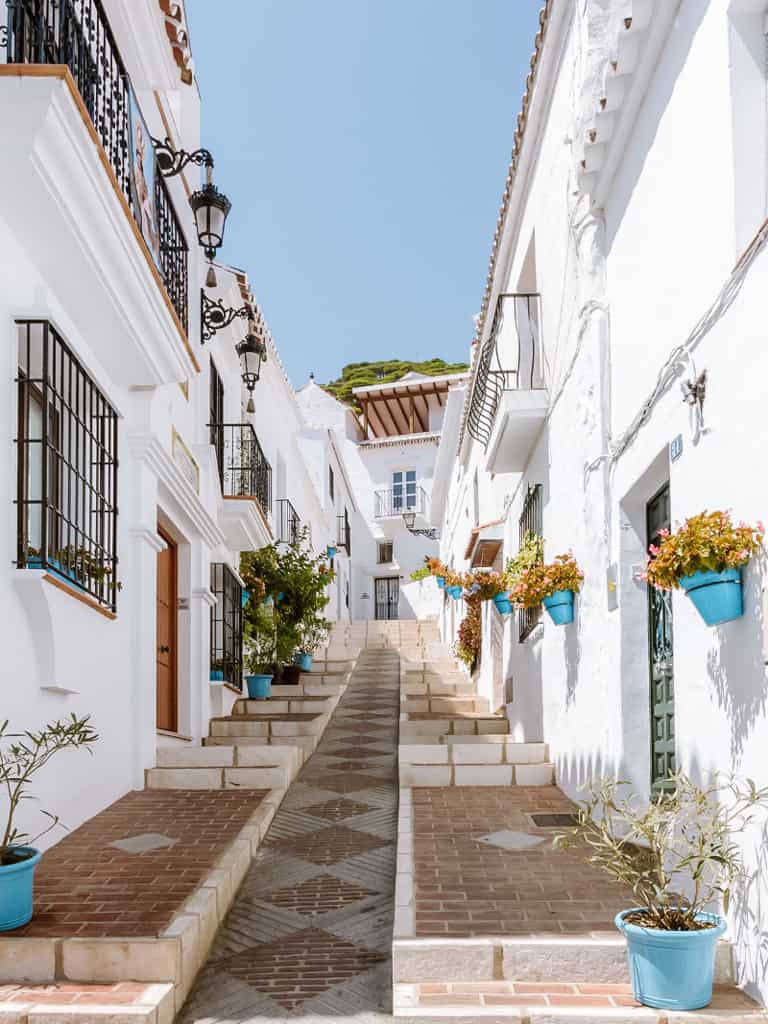
Car rental in Spain – Insurance
Standard liability insurance is legally included in the price. The price also includes CDW (Collision Damage Waiver) insurance, i.e. insurance against damage or theft. This insurance has a high deductible.
What does that mean? If you have a scratch or accident on your rental car, you must pay for the amount of the damage (up to the maximum deductible).
In order to protect itself that you will actually pay for this damage, the rental company will block an amount on your credit card for the duration of the rental period that is equal to the deductible. Once you return the car in good condition, the amount will be released immediately.
The amount of the deductible varies for each car model. You can find the specific amount for each car. This is the amount that the car rental company will block for the duration of the rental – the deductible is most often between €800 and €2,000.
Please note: You will need a credit card in your name to block your deductible, not a debit card. It is a common practice all over the world. A credit card is less risky than a debit card – anyone can get a debit card, but with a credit card you need to meet specific requirements. Fortunately, setting up a credit card is now a matter of minutes (the card usually arrives at your home within a week).
And how can you protect yourself when renting a car in Spain?
One option is to purchase comprehensive insurance, which the rental company offers. If something happens to the car, the rental company will then refund the amount.
Car rental companies also offer insurance. It can be arranged locally. These insurances have different markings:
- CDW (Collision Damage Waiver) – basic collision insurance
- FDW or FCDW (Full Damage Waiver) – full breakdown insurance without chassis and wheel insurance
- Super CDW – full breakdown insurance including chassis and wheels
Another option is to ask your bank if your card offers this insurance.
☞ Read our guide with tips on the best places to visit in Andalusia.
Can I rent a car on the spot?
You can also rent your own car without prior reservation. On-site rental rates are usually higher than when booking in advance. Also, make sure you read the full terms and conditions thoroughly on the spot.
There’s also a good chance (especially in high season) that the car you’ve been looking for won’t be available (for example, you’ll only be left with larger models even if you were planning to rent a smaller car).
If you plan to rent a car with an automatic transmission, be sure to book well in advance. There are only a limited number of similar models and they tend to be booked up early.
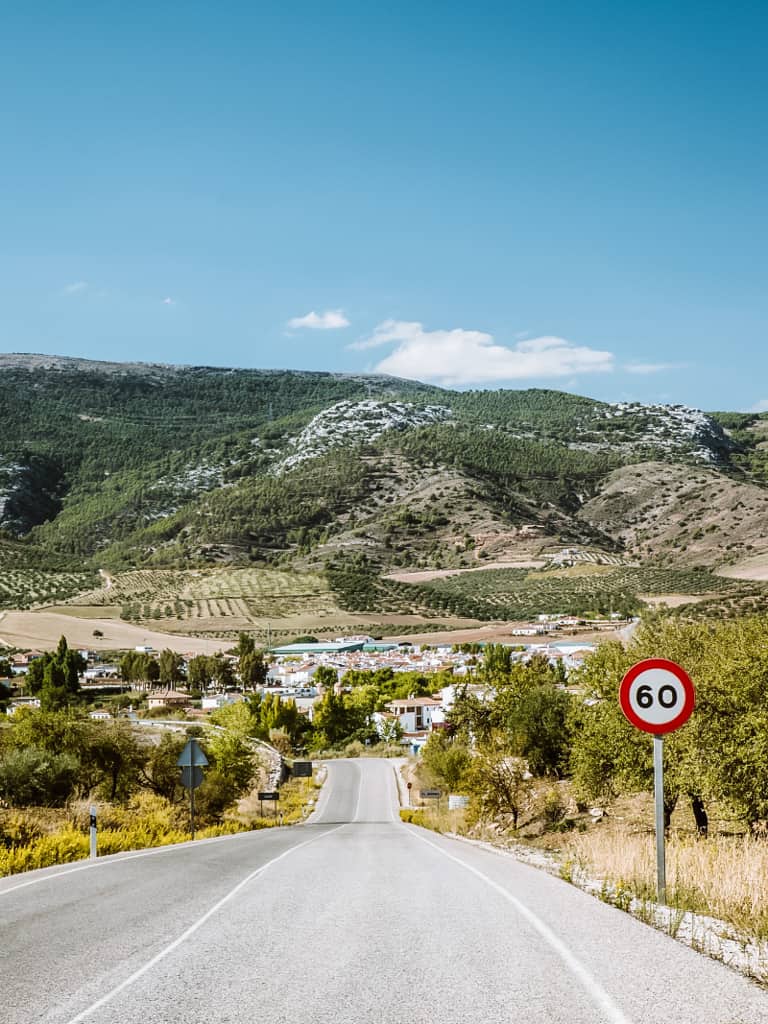
Step 2: Takeover of the car
Prepare your documents and sign the lease agreement
Pick up your car at the location of your choice. Please present your booking confirmation, ID (passport or EU ID card) and driving licence.
Based on your confirmation, the rental company will draw up a rental contract and add everything that is needed (additional driver, additional insurance, etc.).
If you plan to cross borders with your rental car, inform your insurer.
Check the condition of the car
The rental company will provide you with a form that records the condition of the vehicle, the mileage and how much fuel is in the tank. Check the condition of your vehicle and if you find any further damage, take a photo or upload it. Anything that is not documented can then be charged to you. Small abrasions are not dealt with much in Spain – here it’s quite common.
Check the lights (including the fog lights) and see if the car has 2 warning triangles in the boot, 2 yellow vests in the inner passenger compartment, a spare tyre, a jack and tools if the tyre needs changing.
Step 3: Return the car
Fill up the tank as agreed at the time of booking. You don’t need to clean your car unless it is excessively dirty.
Return the car to the agreed location and wait for the employee to check it in front of you and confirm that everything is in order. Please allow approximately 30 minutes to return the car.
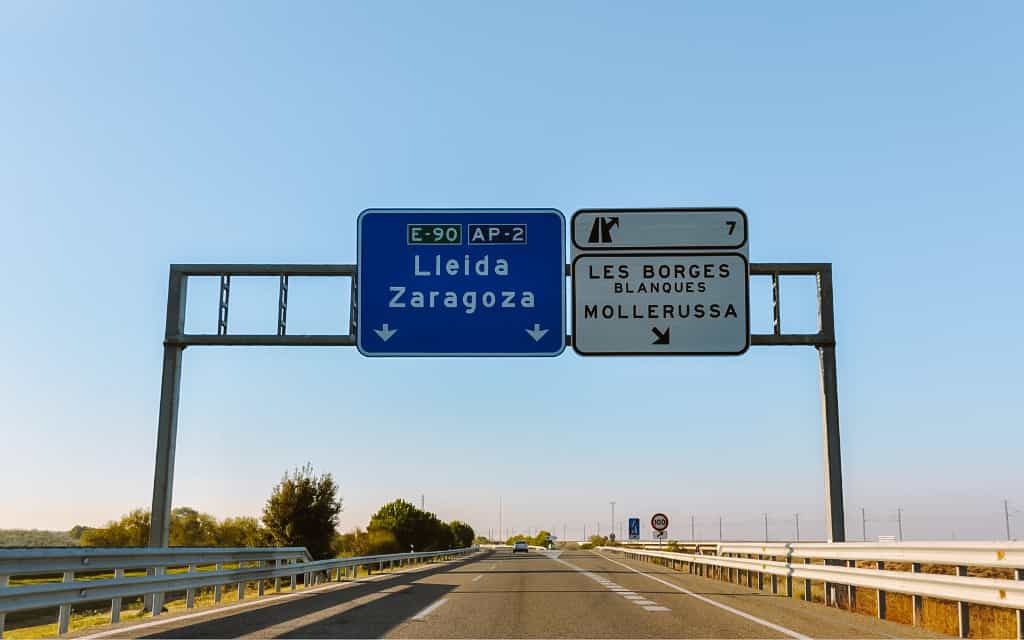
☞ Discovercars.com or another similar service is the best way to rent a car in Spain. You can find international and local car rental companies in one place, so you can filter the best for price and quality. Thanks to free insurance and cancellation, you don’t have to worry about any additional costs.
How to drive a car in Spain?
Driving in Spain is not much different from driving in other countries, but there are certain rules and regulations that you should be aware of to ensure a safe journey.
First, obey the speed limits, which are strictly controlled by the police and the National Guard.
- 50-70 km/h for cities
- 90 km/h outside the city
- 120 km/h on motorways
Secondly, Spanish drivers can be quite aggressive on the road (but they do obey the traffic laws). Some roads may have an unclear layout, so take extra care.
The roads in Spain are generally of good quality and well maintained. Main motorways tend to be the most reliable, with well-marked lanes and clearly marked speed limits. Side roads can vary in surface, from smooth paved roads to winding mountain roads, but are generally safe for travel.
The main roads are usually free and without much traffic. This is not the case in larger cities (Madrid, Barcelona, Seville, etc.) where it is better to park on the outskirts of the city and take public transport to the centre.
You might be surprised how many cars in Spain will have various scrapes, bruises or entire bumpers broken. This is a common practice, as in Italy.
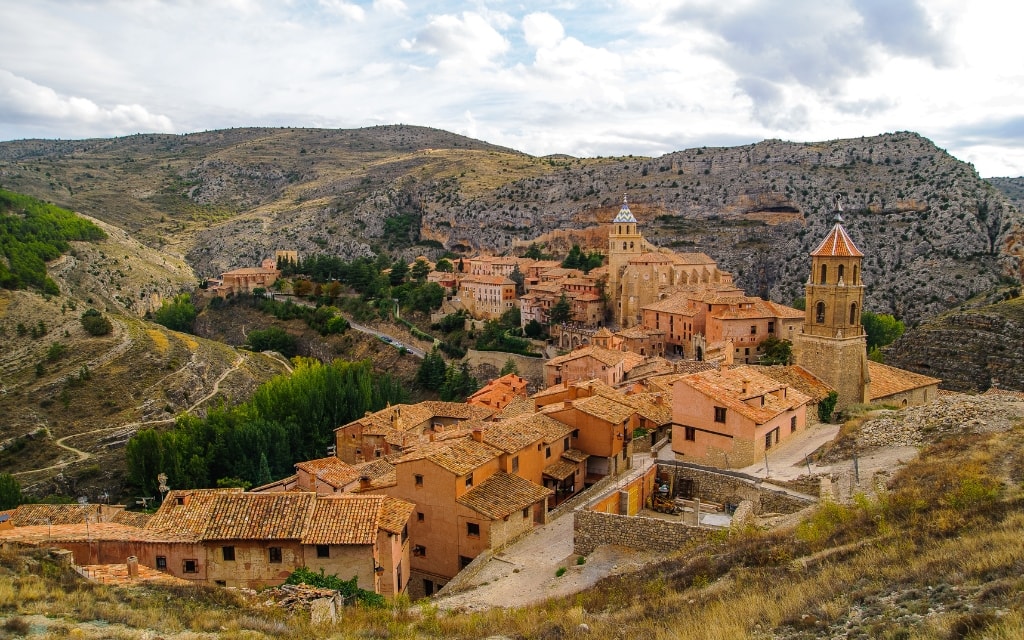
Basic rules for driving a car in Spain
- In Spain you drive on the right and the left lane is the fast lane.
- All passengers must wear their seat belts at all times when travelling in the vehicle.
- As the driver, you must carry your driving licence, vehicle registration documents and proof of insurance.
- The use of mobile phones while driving is prohibited, except for hands-free devices.
- Driving under the influence of alcohol or drugs is illegal and severe penalties are associated with any violation.
- When driving on motorways, expressways and rural roads, use low beams day and night.
- Unless otherwise stated, you have right of way.
- I recommend loading the route before you travel if you don’t have enough mobile data. Spain doesn’t have the best wifi coverage.
- The National Guard, police and photo radars check compliance with the rules of the road. If you get a fine on your rental car company, pay it as soon as possible (the sooner you pay, the less you pay).
Is there a toll in Spain?
Spain has several toll roads throughout the country. These are usually sections that require more maintenance (e.g. mountain tunnels). And most of these sections are also operated by different companies.
Non-tolled sections of motorways are marked only A (autovías) plus one or two digits, and tolled sections are marked AP (autopistas) plus one or two digits (for example AP-7 or AP-46).
When you pass through the toll gate you have to pay a fee, which usually ranges from €5-30 depending on the type of vehicle, the length of the journey and the company. You can pay by card, cash or via the Via-T electronic system.
Check out the toll motorway sections on this map:
Tip: If you would like to avoid paying tolls, select “Avoid toll sections” in the navigation.
☞ Make sure you understand Spanish signs before you go. They are basically similar, but some may be slightly different. Take a look at the road signs in Spain.
Parking in Spain
Parking in Spain can sometimes be difficult. This applies to large cities or heavily visited areas.
Generally, in most heavily visited cities, parking in the centre is prohibited or restricted. There are usually signs indicating where you can and cannot park. If possible, try to avoid the city centre when looking for a parking space and park somewhere further away where you can easily reach the city centre by public transport.
There are plenty of parking options around Spanish towns and villages. Some of them offer free public parking in designated spaces, while others may charge for parking in private car parks or garages.
If you plan to park on the street, pay attention to the coloured markings. White stripes mean free parking (almost impossible in the centre), blue stripes mean paid parking, green stripes are for residents and yellow stripes are no parking.
Paid parking is usually charged between 8:00-18:00 and may be free on Sundays or public holidays. Read specific information on local signs and parking meters.
I recommend Parkopedia to find parking. It’s working great. Google maps is also a good place to read others’ experiences.
This was our tips on how to rent a car in Spain and how to drive a car in Spain. Do you have a question? We’ll be happy to answer it in the comments below. Have a safe journey!
More information about Spain
SPAIN: In our list of the best places to visit in Spain, we give you tips on things to do in Spain.
MADRID: Get inspired by our tips on the best things to do in Madrid.
BARCELONA: Barcelona is the most visited city in Spain, along with Madrid. Check out tips on the things to do in Barcelona (entrance fees, opening hours, photos, map) or plan your trip with the Barcelona in 3 Days itinerary.
VALENCIA: Valencia is another beautiful city in Spain. We’ve put together a complete guide to visiting Valencia, including tips on things to do in Valencia.
ANDALUSIA: And alusia is an incredibly beautiful region in the southwest of Spain. In our list of the best places in Andalusia, we’ve listed our tips for things to do in Andalusia. The most popular seaside resort in Andalusia is Málaga, with its beautiful beaches and plenty to do in Malaga.
SEVILLA: Check out our detailed guide and tips on what to see in Seville.
GRANADA: Granada is a historic gem in Andalusia, home to the world-famous Alhambra Palace. Read our guide with tips on the best things to do in Granada.
☞ Read even more tips about travelling to Spain.
Summary: How to rent and drive a car in Spain
Discovercars.com or another similar service is the best way to rent a car in Spain. You can find international and local car rental companies in one place, so you can filter the best for price and quality. Thanks to free insurance and cancellation, you don’t have to worry about any additional costs.
To rent a car in Spain, all you need is an age over 21, proof of identity, a booking confirmation and a driving licence (for EU/EEA citizens, a normal driving licence from their home country will suffice).
For detailed instructions on how to rent a car in Spain, see our guide.
Driving in Spain is not much different from driving in other countries, but there are certain rules and regulations you should be aware of to ensure a safe journey. Spanish drivers can be quite aggressive on the roads, so take extra care.
The roads in Spain are generally of good quality and well maintained. Main motorways tend to be the most reliable, with well-marked lanes and clearly marked speed limits. Side roads can vary in surface, from smooth paved roads to winding mountain roads, but are generally safe for travel.


